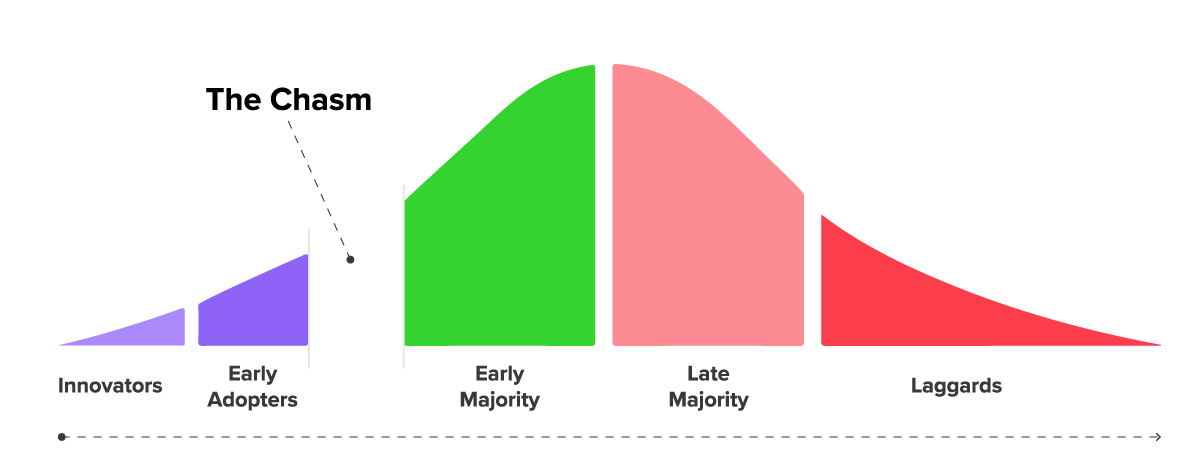Writing a book about the impact of technology on business and society does force you to reflect on the thought: “Just because we can, doesn’t mean we should”. While I’ve been a technologist from the age of 6 (read the book to find out why!), I also have a healthy dose of reality that kicks in when the latest and greatest piece of technology appears. I was inspired to write this post after reading a post from Privacy expert Lydia Knab about our fatigue with AI-generated art.
From where I sit, the buzz and digital curiosity around Generative AI won’t die down anytime soon. What I think will start to normalise though is how much AI-generated content we will tolerate, and how much “real art” we will still crave.
Technologists often look at product adoption curves to better understand how a technology or service might be adopted by the wider population.
The Innovation-Adoption Curve, developed back in 1962 by Ohio Professor Everett Rogers is a method of explaining how, why, and the rate at which an innovation spreads through a population or social system.

The stages are
* Innovators
* Early Adopters
* Early Majority
* Late Majority
* Laggards
When it comes to Generative AI, a simple show of hands in my keynotes reflects where the adoption of this technology is. While many have played with tools such as ChatGPT, very few (apart from the innovators and early adopters) have worked out how it integrate it into their daily workflows.
Not only are we not comfortable with using AI for everything (just because we can doesn’t mean we should), society is not ready for an AI-everything world – now and perhaps ever.
The reason why we don’t have autonomous cars everywhere, and our students aren’t taught by an AI teacher is because society is not ready for this. [thanks Lynn Gribble for your views on this.]
One of my favourite business books, recommended to me by my Father, Ronald Grill is “Crossing the Chasm” by Geoffrey Moore. He looked at the product adoption curve and noted that it was a challenge for some products to cross the chasm between the Early Adopters such as me and the Early Majority (many of you).
I feel that Generative AI may suffer from this if it is forced on consumers too rapidly – a theme that Lydia picks up in her post. She is now so overwhelmed by AI art that she decided to go to a real museum to marvel at human creativity.
Conversely, where AI performs an invisible, but helpful role – for example, speed reading all of your complaints to your phone provider and suggesting a remedy to the poor call centre agent that you’re speaking with that in turn delights you (rather than having them putting you on hold while they “read the notes”) will be an area where Generative AI will be rapidly adopted.
Where are you on the product adoption curve when it comes to Generative AI and what would make you cross the chasm?
